Waltzing Matilda: the Japanese
By Mike Bennighof, Ph.D.
October 2014
Never fight a land war in Asia.
— Vizzini, The Princess Bride
We pretty much followed the advice of Wallace Shawn's Sicilian genius in crafting the Panzer Grenadier line, making Waltzing Matilda a fairly rare bird with its huge array of Japanese forces.
There are 165 new Japanese pieces in Waltzing Matilda, both Japanese Army and Special Landing Force units. A lot of them are tanks, but there are others as well. Here's a look at the new toys — because we know what the bottom line is always going to be for wargamers.
Horse Soldiers
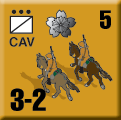
The Japanese have plenty of infantry and machine gun units in Guadalcanal, and so there are none of these added in Waltzing Matilda, at least none in Army colors. They do receive a large force of cavalry, something that some players may not expect. The Japanese fielded five cavalry brigades during the period of the Great Pacific War, all of them seeing action exclusively in China. Each numbered about 2,300 men, organized into two regiments, with a small artillery component (four guns) and sometimes an anti-tank company with four or six guns.
In China, the cavalry conducted deep operations reminiscent of the previous century, and had a reputation for wearing out its horses on the march. "Without the services of this dumb, faithful animal," the Tokyo Gazette reported in 1939, "Japanese troops would not have been able to carry out successful, daring attacks upon enemy positions, particularly in battles upon the rugged slopes and in the narrow passes of the Chinese mountains."
Since the invasion of Australia by large Japanese forces was an unlikely outcome of the Great Pacific War, it's not stretching things much further to include a couple of cavalry brigades in the invasion force. Japan would have the same needs for deep operations on the Australian mainland that were encountered in China, and the horsed brigades fulfilled this mission.
Medium Tanks
  
Waltzing Matilda exists in large part to allow players to put large Japanese armored formations into action, and that means they're going to need lots of tanks — there are only two of them in Guadalcanal. The Type 97 Chi-Ha medium tank was hopelessly inadequate by Western standards, but had some success in China and Malaya when opponents had little or no anti-tank weaponry or low standards of training and morale. With just a 57mm low-velocity gun and weak armor protection, the tank had some use as an infantry support vehicle. When faced with well-trained enemies equipped with anti-tank guns, the tanks suffered horrendous losses as at Nomonhan in 1939 when Soviet tank and anti-tank crews picked off the Japanese vehicles with little problem.
Knowing the weaknesses of their main battle tank, the Japanese sought to improve its capability against enemy armor, replacing the 57mm gun with a long-barreled 47mm weapon with much better anti-tank capability. The new gun would not fit in the existing turret, and so a new one had to be fitted. This Shinhoto ("New Turret") Chi-Ha became the Japanese standard medium tank until 1943 and saw use for the rest of the war.
The Japanese replaced the Type 97 with an improved version, the Type 1 Chi-He, but I skipped over that one in Waltzing Matilda and included the Type 3 Chi-Nu instead, to give the Japanese a tank with some hope of matching the powerful Grant tanks of the Australian 1st Armoured Division. The Chi-Nu was not ready for production until October 1943, but the Japanese had gone from the design requirements to a completed tank in just five months. Had a request for a better tank armed with a 75mm gun gone out 18 months earlier — when the Japanese became aware of German and American tanks bearing similar weapons, and Soviet tanks with 76.2mm guns — there's no reason to think they couldn't have done the same.
The Chi-Nu might have been the most effective Japanese tank built in any quantity, but that still leaves it inferior to the Grant, a vehicle considered obsolete by the time of the Waltzing Matilda scenarios. Its armor protection was fairly weak, and the Type 3 tank gun was modified from a French mountain gun design and in no way equivalent to the powerful long-barreled 75mm gun of the later-generation German PzKw IV.
Light Tanks
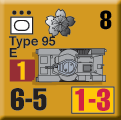
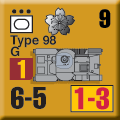
The Japanese built over 2,000 of their Type 95 Ha-Go light tank, making it the most numerous tank in Japanese service, and one example appeared in Guadalcanal. Waltzing Matilda adds a dozen more of them. The Ha-Go had a 37mm gun with about the same performance against armor as the Chi-Ha's 57mm gun (fairly close in game terms, anyway), lightweight armor and only moderate speed. But it was cheap and relative easy to build, which satisfied the Japanese Army's requirements for a tank they could receive in large numbers.
Realizing the tank's inadequacies, new versions appeared including the Type 98 in 1938. While the tank had a better 37mm gun and improved, welded armor, the differences aren't enough to change the tank's ratings from the Type 95 version. The slightly more powerful Mitsubishi diesel of the Type 98 did make enough of a difference to make this tank slightly faster than its older sister.
Transport
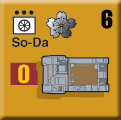  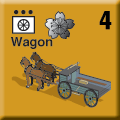 
Here the Japanese add a new array of weird and wonderful vehicles, starting with the Type 98 So-Da armored tractor (we don't make these names up). The So-Da was based on the Type 97 tankette, itself ultimately derived from a Japanese armored tractor design. The So-Da resembled the British Bren carrier, and could carry 10 troops though it was more normally used to tow light artillery pieces.
The Type 1 Ho-Ha armored personnel carrier was exactly what the drawing suggests to longtime Panzer Grenadier players: a Japanese copy of the German SPW 251 half-track. The Japanese model was larger and carried two more soldiers, and entered service only in 1944. But as a copy of a German vehicle that entered service in 1939, it certainly could have been made available earlier and seen action in the Japanese invasion of Australia.
Finally, the Japanese receive two standard transport vehicles that they have not had before: the generic truck and wagon pieces fielded by about every other nationality represented in Panzer Grenadier. Japan did use both of these, and fielded motorized formations in China and Manchuria (and later in the Philippines) but they had no part in the operations on Guadalcanal.
Naval Troops
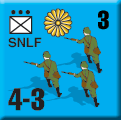 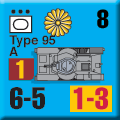  
Japanese Special Naval Landing Forces appeared in Guadalcanal, but there aren't enough of them there for the scenarios I wanted to include in Waltzing Matilda. In the new set, there are more infantry and machine-gun units and this time we have them in their proper olive uniforms. They also get some Type 95 light tanks of their own, a vehicle used by several SNLF units.
The "Japanese marines" also get their own artillery, ranging from 70mm mountain guns to big 76.2mm naval pieces with flat-trajectory fire (and thus no bombardment capability) but the best anti-tank performance of any Japanese weapon in the game. They also get the standard 37mm anti-tank guns and improved 47mm anti-tank weapons that they did not have in Guadalcanal.
Mike Bennighof is president of Avalanche Press and holds a doctorate in history from Emory University. A Fulbright Scholar and award-winning journalist, he has published over 100 books, games and articles on historical subjects.
He lives in Birmingham, Alabama with his wife, three children and his dog, Leopold. |
